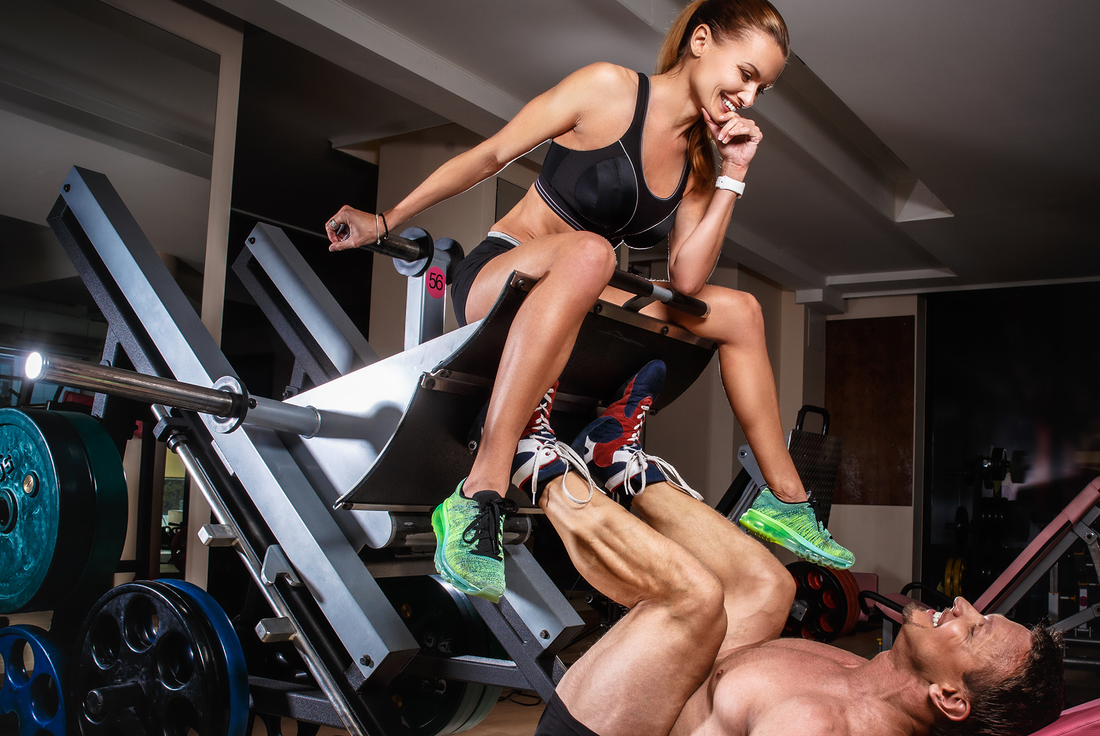Bench press: you got this. Biceps curls: you own them. Skullcrushers: your triceps dominate. Squats: Um… Well, you were on such a roll until you arrived at that part, weren’t you? We cannot all be good at everything, or none of us would be considered good at anything. Just as we all possess areas of expertise in our career, education, and hobbies, we all have areas where we are just a little bit clueless, right? When it comes to the gym, there are times when some of us just happen to be a little clueless regarding certain muscle groups.
It may not be our fault. Initially, most of us were at the mercy of the equipment afforded to us (often a rusty bench press station in a garage) and the knowledge available (likely a buddy who just wants to bench and curl all day). As we delved further into training, we slowly developed an understanding of the importance of balanced training in order to achieve a balanced body, in order to look our best and avoid injury at the same time. One day, we woke up and realized we’re the stereotypical “bar room bodybuilder”, with awesome chest and biceps, and legs a bit lacking.
The first thing you’ll need to realize is that you have some ground to make up. It’s not just about getting serious about leg training. It’s about de-emphasizing the upper body so your own personal resources (time, energy and recovery) are available for the legs in a very big way. Let’s check out eight strategies we can employ to bring our legs up to par!

Putting legs first
First off, you need to begin training your legs on day 1 of each lifting week. You have just enjoyed 1-2 rest days, and your training energy levels are going to be at their highest. You’ll be able to exert the greatest possible amount of energy, as your glycogen levels are restored and most of your major muscle groups should not be sore. Plus this will give you the ability to revisit a muscle group such as hamstrings or calves a second time during the wee should you so desire.
Spike that volume
On that note, you should work to increase your training volume, both in terms of how many sets you’re using on leg day, as well as how many times you’re training per week. Hitting legs once per week hasn’t been delivering satisfactory results. However, implementing all of the changes listed here might make training legs twice each week rather difficult in terms of recovery. The best outcome would involve the use of 1.5 leg workouts each week. Hit them once on week one, and twice on week two. Repeat this, allowing you to target your hamstrings, thighs, glutes and calves a total of SIX time per month. Keep the rest of your muscle groups on a “once per week” standard bodybuilding training schedule.
Incorporate cardio
Many people shy away from cardiovascular exercise when trying to build leg mass. And it is true that engaging in two hours of full court basketball after squat day will certainly squander many of the recovery resources best saved for growing new muscle, you can definitely put cardio to work to build up a pair of lagging wheels. Step-up movements, incline treadmill, high resistance spin/cycle class, and even fuller-body movements such as Jacob’s Ladder can all be used to force some anaerobic (muscle gain) properties out of a standard fat loss (aerobic) workout. If it makes those legs burn – use it!

Lean toward compound movements
Most people with less-than-stellar leg development also happen to overlap with the group of people that enjoy using machines on leg day. It’s time to rebalance your training, and dedicate at least 2/3 of your training day to heavy iron lifting, which will recruit stabilizer muscles and force the improvement of core strength and overall balance – and thus, more muscle! Squats, lunges, standing barbell raises, stiff-legged deadlifts, leg press and other iron movements will build way more muscle than pumping machines can ever deliver!
Train for strength – and the pump!
Work to target both the numbers gains, and the muscle pump, as you train. Each workout, you should be adding a miniscule 1-2 pounds of weight to the bar. Nobody can add 15 pounds to the bar every workout, but the body does adapt very nicely to smaller incremental additions to the bar. Stack up more weight every week, while at the same time remaining ever cognizant of that much needed mind-muscle connection. Arnold loved the pump, and so should you! Saturate those muscle fibers with blood to etch out detail and new growth.
Listen to your body
Above all, you should devote energy each week to listening to your body and observing if these radical changes you made to your training protocol are having a positive effect upon your leg muscle development. As long as you’re seeing changes, keep a system in place. When the new growth subsides, the time has arrived to change up your factors once again. When you’re sore and need a rest day, you should take one. When you feel like the workout has ended but you have more gas in the tank, you should keep training. Listen to what your body is telling you, as you know it better than anyone else!
You have arrived at this point in time with a “top heavy” body because you engaged in top heavy training for months or even years. You will only reverse this trend by making your focus into a bottom heavy system for a much shorter, more intense period of time in which you make legs the emphasis of your training. Once your symmetry reaches a happier place and you have achieved balanced bliss, you can return to recklessly making your biceps and chest a stronger emphasis in your training. Good luck!


